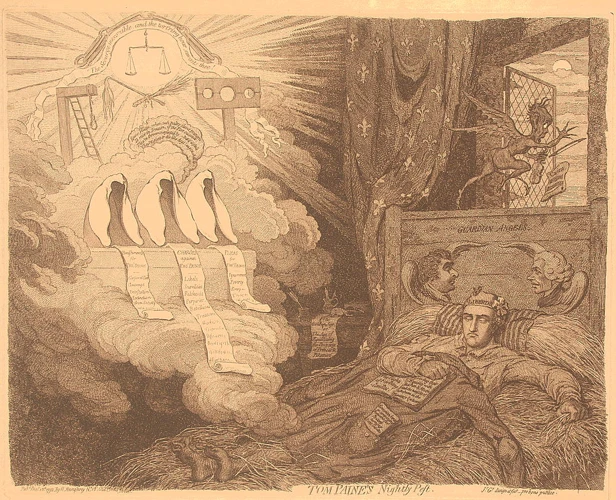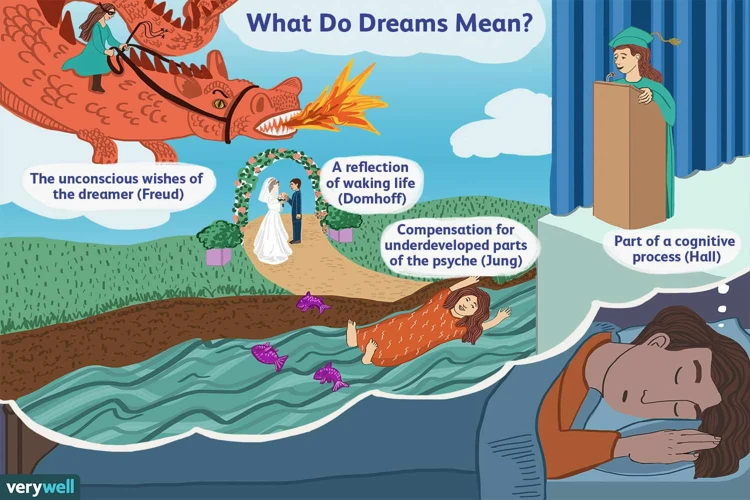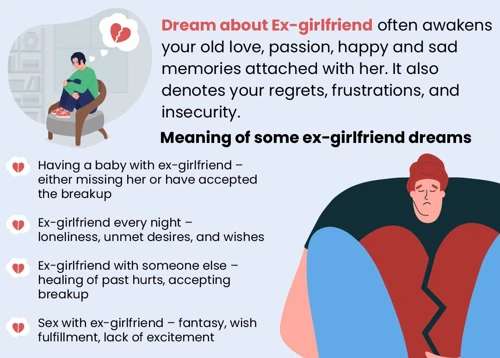The enigmatic nature of dreams has long puzzled and intrigued individuals throughout history. From ancient civilizations to modern times, dreams have been a mysterious realm where our subconscious minds convey messages and symbols that are often difficult to decipher. In this article, we will delve into the intriguing topic of decoding the meaning of disappearing figures in dreams. Through a step-by-step exploration, we will uncover the significance of these elusive figures and unravel the complex web of symbolism they represent. Join us on this captivating journey as we attempt to unravel the mysteries of our dreams.
The Significance of Dreams

Dreams hold great significance in our lives as they provide a window into our subconscious minds and offer valuable insights into our thoughts, emotions, and experiences. They can be filled with vivid imagery, emotions, and symbols that carry hidden meanings. While dreams often seem bizarre and disconnected from reality, they are far from random. Instead, they serve as a reflection of our innermost thoughts, desires, fears, and unresolved conflicts. By examining our dreams, we can gain a deeper understanding of ourselves and the issues that may be affecting us on a subconscious level.
Understanding Dreams and Their Interpretation
Understanding Dreams and Their Interpretation:
Dreams have been a subject of fascination and interpretation for centuries. To decode the meaning of our dreams, it’s important to understand that they often consist of symbolic language. Dreams use symbols to represent our deepest emotions, desires, and fears. While the exact interpretation of a dream may vary from person to person, there are common symbols and themes that can help guide our understanding. By paying attention to the emotions, symbols, and patterns that arise in our dreams, we can begin to unravel their hidden messages. It is also important to consider the context of our personal lives, as dreams often reflect our current situations and experiences.
The Role of Symbols in Dreams
In the realm of dreams, symbols play a crucial role in conveying messages and insights from our subconscious minds. Symbols can manifest in various forms, such as objects, people, animals, or abstract representations. They often carry personal and cultural meanings that may differ from their literal interpretations. These symbols serve as a unique language through which our subconscious communicates important information to us. Understanding the symbolism in dreams requires careful interpretation and analysis, as each symbol can have multiple layers of meaning. By deciphering the symbolism present in our dreams, we can gain a deeper understanding of ourselves and the issues we may be grappling with in our waking lives.
The Symbolism of Disappearing Figures

The symbolism of disappearing figures in dreams is a fascinating subject that invites us to explore the depths of our subconscious. When figures vanish or fade away in our dreams, it can signify various themes and emotions. One possible interpretation is that these disappearing figures represent aspects of ourselves or others that we feel disconnected from or that are slipping away from our lives. It may reflect feelings of loss, abandonment, or the fear of being forgotten. Additionally, the disappearing figures can also symbolize the desire for escape or the need to let go of certain people or situations that no longer serve us. To gain further insight into the specific meaning of disappearing figures in your dreams, it is essential to analyze the context, emotions, and personal experiences associated with the dream.
Why Do People Disappear in Dreams?
In the realm of dreams, the disappearance of people can hold significant meaning. There are several reasons why people may disappear in dreams. One possibility is that the person represents a certain aspect of ourselves or our lives that we are trying to distance ourselves from. Their disappearance could symbolize our subconscious desire to detach from certain traits, memories, or situations. Another interpretation could be that the disappearing figure represents a fear of losing someone or something important to us. It may reflect our anxieties about abandonment or the fear of being left alone. Understanding the context and emotions surrounding the disappearance can provide valuable insights into the personal meaning behind this dream symbol.
Exploring the Psychological Meaning of Disappearance
When it comes to the symbolism of disappearing figures in dreams, it is crucial to explore the psychological meaning behind these occurrences. The act of someone disappearing in a dream can evoke feelings of loss, abandonment, or a sense of being ignored or overlooked. It may represent unresolved issues or conflicts in relationships, where the disappearing figure symbolizes a person or aspect that is fading away or becoming distant. Disappearance in dreams can also be an indication of repressed emotions or hidden aspects of ourselves that we are reluctant to confront. Exploring the psychological meaning behind these dreams can provide valuable insights into our own emotional state and interpersonal dynamics. By examining the context and emotions associated with the disappearing figures, we can begin to unravel the deeper messages that our subconscious is trying to communicate.
The Interpretation of Common Scenarios
The interpretation of common scenarios in dreams can provide valuable insight into the meaning behind disappearing figures. One common scenario is when people you know, such as friends or family members, suddenly vanish from your dream. This can symbolize unresolved issues or a fear of losing those relationships. Another scenario is when fictional characters or celebrities disappear from your dream, which may indicate a desire for fame or recognition. Additionally, dreaming of yourself disappearing or becoming invisible can reveal feelings of insignificance or a desire to escape from others’ expectations. Understanding the interpretation of these common scenarios can help unlock the hidden messages behind the disappearing figures in your dreams. To explore more about dream interpretations, you can read our article on dreams about visiting someone.
Analyzing Your Personal Connection

When it comes to decoding the meaning of disappearing figures in your dreams, it is crucial to analyze your personal connection to these individuals or entities. Pay attention to the nature of your relationships with them and how they make you feel in your waking life. Are they close friends, family members, or acquaintances? Are they people you admire, fear, or have unresolved issues with? By examining these connections, you can gain insight into why these particular individuals are disappearing in your dreams and what it symbolizes for your own personal journey. It is also important to consider any current life situations or fears that may be influencing the presence of disappearing figures in your dreams. For example, if you are feeling overwhelmed or disconnected in your waking life, it may manifest as disappearing figures in your dreams. Understanding these personal connections is crucial for unraveling the deeper meanings behind your dream experiences.
Examining Your Relationships and Social Interaction
- Observing Relationship Dynamics: When deciphering the meaning of disappearing figures in your dreams, it’s important to analyze your relationships and social interactions. Pay attention to the people who vanish in your dreams and consider their significance in your waking life. Are there any unresolved conflicts or issues with these individuals? Is there a sense of detachment or distance in these relationships that is reflected in your dreams?
- Exploring Social Anxiety: Dreams featuring disappearing figures may also point to underlying social anxiety or feelings of isolation. If you frequently dream of people vanishing or being unable to connect with others, it could be a manifestation of your fears and insecurities in social situations. These dreams might serve as a reminder to address any social fears or seek support to improve your social interactions.
- Reflecting on Relationship Loss: Another interpretation of disappearing figures in dreams is the loss of a significant relationship or the fear of losing someone close to you. This dream scenario may arise when you are grappling with the emotions associated with a breakup, a strained friendship, or the fear of abandonment.
Examining Current Life Situations and Fears
Examining current life situations and fears is crucial when deciphering the meaning behind disappearing figures in dreams. These figures may represent individuals or aspects of our lives that we feel are slipping away or becoming lost. By analyzing our waking life, we can identify any connections between the disappearing figures in our dreams and real-life situations. For example, if we are experiencing uncertainty or fear in a relationship, it may manifest as someone disappearing in our dreams. Similarly, if we are facing challenges or changes in our personal or professional life, the anxiety and fear associated with these situations may manifest as disappearing figures in our dreams. By exploring the potential connections between our dreams and our current life circumstances, we can gain valuable insights into the underlying emotions and experiences that may be influencing our dreams.
Interpreting Cultural and Archetypal Influences

Interpreting Cultural and Archetypal Influences
When it comes to decoding the meaning of disappearing figures in dreams, it is important to consider the cultural and archetypal influences that may shape our dream imagery. The collective unconscious, as proposed by Carl Jung, suggests that dreams can tap into universal symbols and themes that are deeply ingrained in our shared human experience. These archetypal figures and motifs, such as the hero, the trickster, or the wise old man, can manifest in our dreams and offer insights into our personal journey and growth. Additionally, cultural influences play a significant role, as the symbolism in dreams can vary across different societies and belief systems. Exploring cultural mythology and folklore can provide valuable context for understanding the meaning of disappearing figures in dreams. By delving into these cultural and archetypal influences, we can gain a broader perspective on the symbolism present in our dreams and unlock hidden layers of meaning. Dreaming about being in someone else’s body is one example where cultural and archetypal influences can shape the interpretation of the dream.
Collective Unconscious and Mythological References
The collective unconscious, a concept developed by Carl Jung, is a powerful force that influences our dreams and their symbolism. It represents the shared experiences, symbols, and archetypes that are deeply embedded in the human psyche. In dreams, we may encounter figures and symbols that have mythological references, drawing upon universal themes and narratives. These archetypal figures, such as gods, goddesses, heroes, and monsters, hold deep symbolic meaning and can provide insights into our own personal journeys and struggles. Exploring the collective unconscious can unravel the rich tapestry of our dreams and shed light on the profound connections between our individual experiences and the broader human experience.
Cultural Influences on Dream Imagery
- Our dreams often draw upon the cultural influences in which we are immersed. Cultural beliefs, traditions, and experiences can shape the imagery and symbols we encounter in our dreams. For example, in some cultures, dreaming of animals may carry specific meanings associated with spirituality or omens. The interpretations of certain symbols can vary greatly depending on cultural contexts and personal experiences.
- The collective knowledge and shared symbolism within a culture can also influence dream imagery. Mythological stories, religious teachings, and folklore can seep into our dreams, creating a rich tapestry of symbols that reflect the cultural narratives we have internalized. These cultural influences can provide valuable insights into the deeper layers of meaning within our dreams and help us make connections to our cultural identity and heritage.
- It is important to note that cultural influences on dream imagery are not fixed or universal. They can vary greatly across different regions, communities, and individuals. Exploring and understanding the cultural influences on dream imagery can provide a broader perspective in dream analysis and interpretation. By recognizing the cultural nuances, we can better grasp the symbolic messages hidden within our dreams.
Practical Tips for Dream Analysis
- Maintaining Dream Journals for Better Insights: Keeping a dream journal is an effective way to track and analyze your dreams over time. Upon waking up, write down as many details as you can remember about your dream, including any disappearing figures. Pay attention to emotions, symbols, and any recurring patterns. This can help you identify connections and gain a deeper understanding of the underlying meaning behind these figures.
- Seeking Professional Help for Complex Dreams: If you find that your dreams are causing distress or are particularly complex, seeking the assistance of a professional such as a therapist or a dream analyst may be beneficial. They can provide guidance and support in interpreting the symbolism and helping you navigate the messages your subconscious is trying to convey. Remember, analyzing dreams is a deeply personal process, and sometimes an outside perspective can offer valuable insights and clarity.
Maintaining Dream Journals for Better Insights
Maintaining a dream journal is a valuable practice for gaining better insights into the meaning of your dreams. By recording your dreams immediately upon waking, you can capture the details, emotions, and symbolism while they are still fresh in your mind. As you compile a collection of dream entries, patterns may emerge, allowing you to identify recurring themes or symbols that hold personal significance. Additionally, keeping a dream journal can help you track changes in your dreams over time and provide a reference point for exploring potential connections between your dreams and your waking life experiences. By revisiting and analyzing your dream journal regularly, you can begin to unravel the hidden meanings behind your dreams and gain a deeper understanding of your subconscious mind. So grab a pen and paper or create a digital journal to embark on this enlightening journey of self-discovery and exploration of your dreams.
Seeking Professional Help for Complex Dreams
When it comes to complex dreams that are particularly puzzling or disturbing, seeking professional help can be incredibly beneficial. Psychologists and dream analysts have the expertise and knowledge to assist in unraveling the deeper meanings behind these dreams. They can provide valuable insights, interpretation, and guidance to help individuals make sense of their complex dream experiences. By consulting a professional, individuals can gain a clearer understanding of the psychological and emotional aspects of their dreams, as well as any underlying issues that may be present. If you find yourself grappling with complex dreams that leave you feeling confused or unsettled, consider reaching out to a professional for support and guidance.
Conclusion
In conclusion, the disappearing figures in our dreams hold deep symbolism and can provide us with valuable insights into our subconscious minds. Understanding the meaning behind these vanishings requires introspection, analysis, and a willingness to explore our personal connections, relationships, and fears. By keeping dream journals, seeking professional help when necessary, and delving into cultural and archetypal influences, we can unravel the hidden messages within our dreams and gain a deeper understanding of ourselves. So, the next time you find yourself pondering the meaning of disappearing figures in your dreams, remember that they hold keys to unlocking the secrets of your inner self.
Frequently Asked Questions
1. Why do we dream?
The exact purpose of dreaming is still not fully understood. However, it is believed that dreaming serves various functions such as processing emotions, consolidating memories, problem-solving, and creative inspiration.
2. Can dreams predict the future?
While some people claim to have experienced prophetic dreams, there is no scientific evidence to support the idea that dreams can predict the future. Dreams are more closely associated with our internal thoughts and emotions rather than external events.
3. Do recurring dreams have a specific meaning?
Recurring dreams often signify unresolved issues or emotions that are deeply rooted in our subconscious. They can highlight areas of our lives that require attention or changes that need to be made.
4. Can nightmares be beneficial?
Despite their unpleasant nature, nightmares can provide valuable insights into our fears, anxieties, and unresolved traumas. They can serve as a catalyst for personal growth, helping us confront and overcome our deepest fears.
5. Are there universal symbols in dreams?
While some symbols may have collective meanings across cultures, the interpretation of dream symbols is highly personal and can vary based on an individual’s experiences, beliefs, and cultural background.
6. Is it possible to control our dreams?
Through techniques like lucid dreaming, it is possible to gain some level of control over our dreams. Lucid dreaming is the awareness that one is dreaming while in the dream state, allowing individuals to actively participate and manipulate the dream narrative.
7. Can medications affect our dreams?
Yes, certain medications, such as antidepressants or sleep aids, can influence the content and intensity of dreams. It is recommended to consult with a healthcare professional if you are experiencing unusual or distressing dream patterns as a result of medication.
8. Are dreams always symbolic?
While dreams often contain symbolic elements, not all dreams are heavily symbolic. Some dreams may be direct reflections of our daily experiences or simply a reflection of our subconscious thoughts and emotions.
9. Can interpretation of dreams be subjective?
Yes, the interpretation of dreams is highly subjective, as it is based on an individual’s unique experiences, emotions, and personal associations with symbols. Different interpretations can be valid depending on the context of the dreamer’s life.
10. How can dream analysis benefit personal growth?
By exploring and understanding the symbolism and messages in our dreams, we can gain a deeper understanding of ourselves, our desires, fears, and unresolved issues. This self-awareness can empower personal growth, leading to improved emotional well-being and decision-making.






